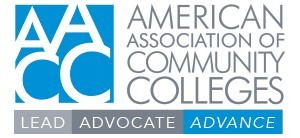DataPoints: ATE in action The National Science Foundation’s Advanced Technological Education (ATE) program awards grants to support a wide variety of efforts to improve technician education at public two-year colleges in fields ranging from advanced manufacturing and engineering, to nanotechnology and biotechnology, to agriculture and environmental sciences, and more. The program supports curriculum development, professional […]
DataPoints: Developing diversity in nursing programs
The U.S. was already facing a growing shortage of nurses when Covid hit and accelerated the crisis. According to a recent Center for American Progress (CAP) report, the primary challenges that higher education institutions face in graduating more nurses are: a shortage of nurse educators, a lack of clinical placements for student nurses, and inadequate […]
DataPoints: Paying for college on their own
Sometimes it’s worth emphasizing the obvious: A larger percentage of community college students pay for their own education than students attending four-year colleges. But results from a new Cengage survey of 1,200 undergraduate students ages 18 to 44 (see graph below) show just how big the gap is between the two groups: 61% of four-year […]
DataPoints: Perceptions of trade careers, STEM equity
A new report from international science-based manufacturer 3M highlights persistent gaps in Americans’ views on education and careers related to STEM and the skilled trades. The report observes that the skilled trades continue to have an image problem. Most Americans agree there is a need for more skilled trade workers, yet 71% say despite their respect for […]
DataPoints: Student supports in recruiting, enrolling and retaining
Increasing enrollment (87%) and retention rates (78%) remain top-tier concerns for community college leaders, according to a new report based on a fall 2021 survey of two-year college officials. Increasing graduation rates (59%) was third, followed by reducing equity gaps (57%) and re-engaging lapsed students (52%). Seven in 10 survey participants said that holistic student support was […]
DataPoints: Positive views of blue-collar jobs
Nearly three-fourths (74%) of blue-collar workers in the U.S. say there is a good career path in their line of work, and a similar proportion (73%) believe more young adults should pursue careers in their field, according to a recent survey commissioned by staffing company Express Employment International. More than 90% of blue-collar workers polled for the […]
DataPoints: Responsibilities increase for student affairs
A new survey indicates that many student affairs professionals expect to see their responsibilities increase over the next five years in areas such as equity, diversity and inclusion, online student communications and crisis management for students, among others. The survey by NASPA: Student Affairs Administrators in Higher Education released in March shows that nearly all of the […]
DataPoints: Number of HSIs drops
For the first time in 20 years, the number of Hispanic-serving institutions (HSIs) in the U.S. has decreased. It dropped by 10 institutions, from 569 in 2019-20 to 559 in 2020-21, according to analysis by Excelencia in Education. The decrease is due, in part, to enrollment declines, institutional closings and consolidation during the pandemic, the advocacy group said. HSIs […]
DataPoints: The community college baccalaureate landscape
Nearly half of all states (24) have authorized at least some community colleges to confer bachelor’s degrees, according to a recent analysis by New America. The heaviest concentration of those states are in the West, with 15 of the states located west of the Mississippi River. Early adopters such as Georgia, Washington and Florida have […]
DataPoints: State and local funding
State funding is an important revenue stream for public institutions of higher education. However, the distribution between two-year and four-year colleges varies considerably by state. According to data recently released by the State Higher Education Executive Officers Association, less than one quarter (22.8%) of state higher education fiscal support is used to support public two-year college operating funds, […]
